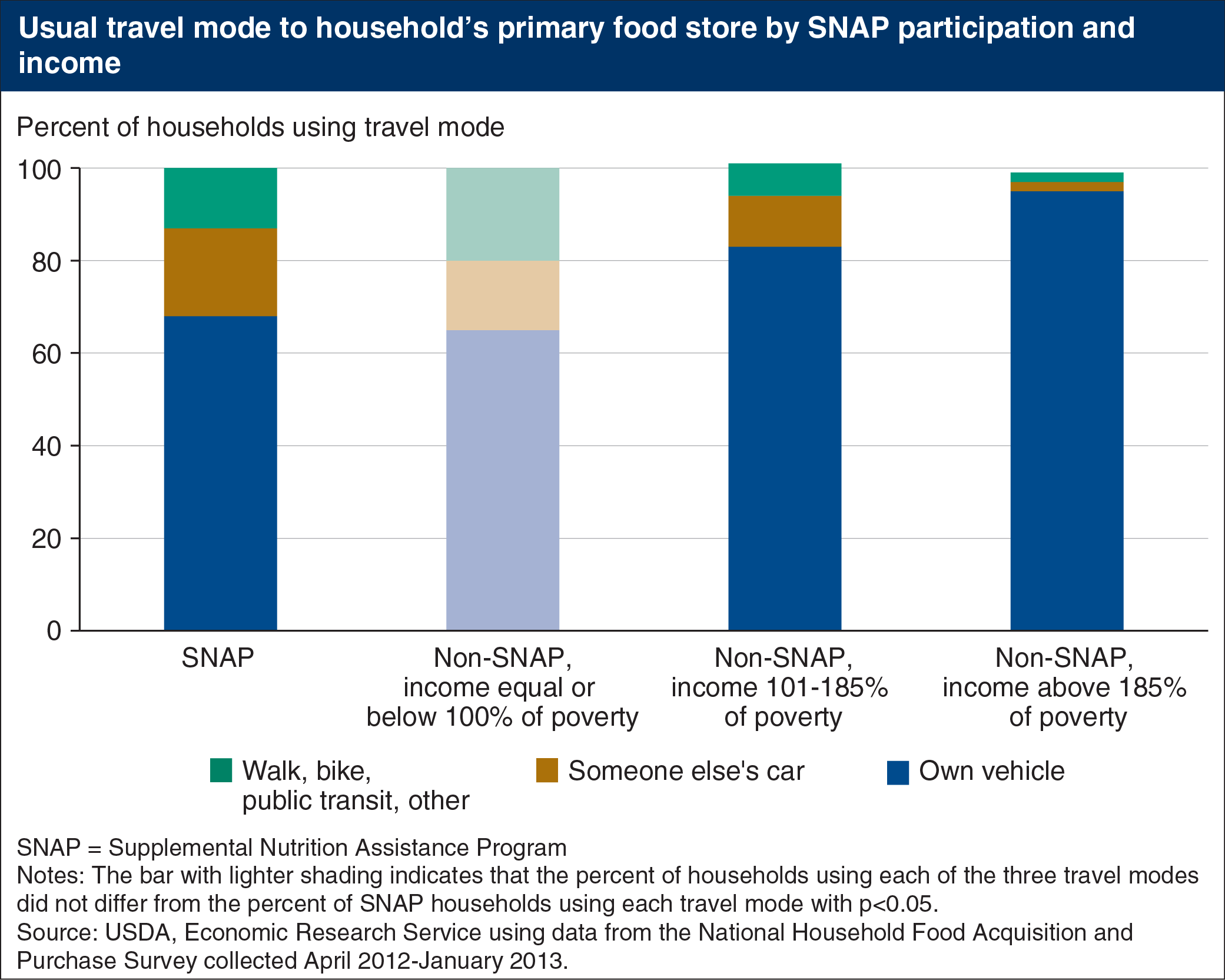Nearly one-third of SNAP participants use someone else's car, walk, bike, or take public transit for their grocery shopping
- by Michele Ver Ploeg
- 7/15/2015

Data from USDA’s new National Household Food Acquisition and Purchase Survey (or FoodAPS) show that most U.S. households use their own vehicles for their primary food shopping. However, households that participate in USDA’s Supplemental Nutrition Assistance Program (SNAP) are more likely to rely on someone else’s car, walk, bike, or take public transit than households with incomes above the poverty thresholds. Sixty-eight percent of SNAP participants used their own cars for food shopping, compared to 83 percent of non-SNAP households with incomes between 101 and 185 percent of poverty and 95 percent of households with incomes above 185 percent of poverty. Travel modes of non-participants with income below the poverty line are similar to those of SNAP households. Among SNAP households, 19 percent reported using someone else’s car to do their primary shopping, and 13 percent walked, biked, or used a shuttle or public transportation. How one travels to a grocery store can influence what gets purchased; traveling by bus or walking limits purchases to what can be carried or pulled in a cart. A person needing to borrow someone else’s car—or share a ride to a store—may not be able to shop as frequently or at the times when food supplies are running low. This chart is from the ERS report, Where Do Americans Usually Shop for Food and How Do They Travel to Get There?, March 2015.

